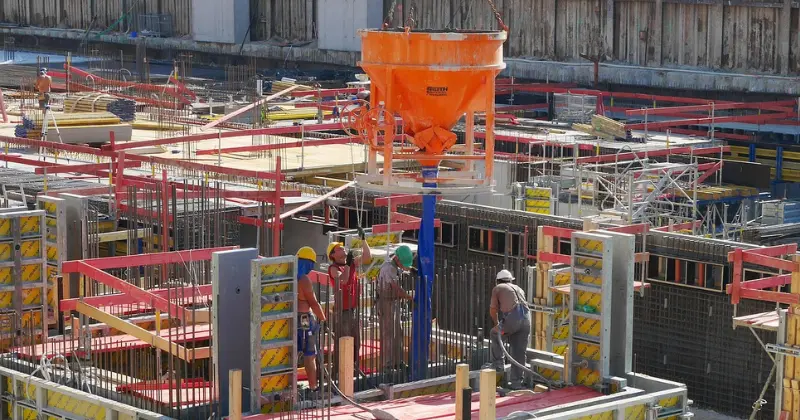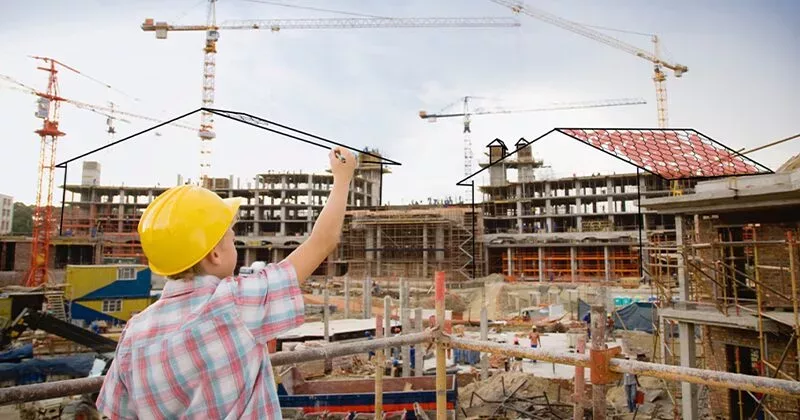10 mins read
Understanding Construction Change Orders: Tips for Writing, Reviewing, and Expediting Changes

One of the few constants in the construction industry is change. Capturing and communicating changes throughout the project lifespan is one of the best ways to prevent mistakes, rework, and confusion, while staying aligned with the current design and contract terms. Construction change orders are the key to consistently controlling this process.
In this blog post, we review the definition and purpose of change orders in construction, along with the various types of modifications that must be tracked and organized. We also provide some useful tips and best practices to help teams optimize their change order writing and management processes.
Key Takeaways:
- A construction change order is a document used to detail a modification of work originally agreed to by two relevant parties.
- Construction architects and designers sometimes request changes midway through the project to reduce complexity or add new design elements requested by the client.
- Change order types include design, schedule, error correction, and scope changes, with most other changes also falling into the latter category.
- Effective change order writing requires a combination of detail, accuracy, cross-functional review, and software tools to improve writing quality and efficiency.
- Construction software solutions support the change order process, with planning, document control, quantity takeoff, and estimation modules providing valuable inputs for accurate and timely changes.
What is a Construction Change Order?
A construction change order is a document used to detail the modification of work originally agreed to by two relevant parties, such as the general contractor and client, or contractor and subcontractor. The change order must be approved by both parties involved.
Change orders can be initiated by owners, designers, contractors, or any other stakeholder seeking to propose modifications to the design, scope of work, schedule, or contract terms. Typically, the party initiating the change is also responsible for writing and submitting the document, so they should understand how to write a change order effectively to avoid delays in review and approval cycles.
Why are Construction Change Orders Needed?
Any alteration to the scope of a project, as outlined by the contract, requires a change order. This inevitably impacts the resource and time commitments made by contractors and subcontractors, so the updated terms and responsibilities must be negotiated quickly. In some cases, change orders require additional materials, tools, or equipment to be ordered, and an approved change order is needed to kickstart procurement activities.
The construction change order process also comes into play when correcting mistakes or oversights in the original plan that are discovered during construction. In other cases, an architect or designer might request changes midway through the project to reduce complexity or add new design elements requested by the client. Unforeseen site conditions like soil contamination or underground obstacles can also become the source of change order requests.
Types of Construction Change Orders

Despite the wide variety of sources, each construction change order example can be assigned to one of several basic categories used to define the proper review, approval, and implementation protocols.
- Design changes: As the name implies, this common change order type includes any updates to the original construction blueprints or design documents. Changes in this category always require owner and contractor approval, and a formal amendment to the contract.
- Schedule changes: Any request that alters the project timeline or completion date beyond the contract boundaries also requires a change order. Contractors often request additional compensation to account for unplanned labor or equipment leasing expenses.
- Errors and omissions: Along with design oversights discovered during the build, this category includes any material, equipment, or installation method changes needed to conform with the original plan. With very few exceptions, these changes are accompanied by cost increases.
- Scope changes: Any alteration to the project design, duration, cost, or type is classified as a scope change. For this reason, most change orders in construction contracts also fall into this broader category.
How to Write a Change Order in Construction

Change orders must include an explanation of what needs to change, and why, but that is just the beginning. Writing an effective change order requires attention to detail and cross-functional participation, along with an accurate assessment of the expected impact.
Follow a standardized process
Electronic change order templates are extremely valuable, since they provide a standardized method for all originators and reviewers to follow. The system or template utilized for construction change order management should be defined in the contract and communicated to all stakeholders who either originate or approve changes.
Describe the change
The change description is critical, since it includes the impacted construction specifications, drawings, and documents, as well as any modifications to material requirements or installation methods. This section of the construction change order request should also include the reason the change is needed, and references to any supporting documents.
Budget and schedule impact
The cost and additional time associated with a change may not always be fully understood when the change is submitted, but the originator should do their best to quantify the change in terms of time and cost. If there is no anticipated impact in either category, this should also be stated in the change order.
Review with other stakeholders
A construction change order eventually becomes part of a legally binding contract, so it is in the best interest of contractors, subcontractors, and clients to review changes informally and discuss all available options prior to submission. Advice and feedback from experts such as environmental scientists, structural engineers, or suppliers also helps to ensure all information is timely and accurate.
Complete the approval process
After a change is submitted, the review and negotiation processes that follow may require the involvement of other executives, project managers, or legal teams, depending on the scope, complexity, and financial impact of the change. Once a consensus is reached, the change order is signed by both parties, then communicated to all relevant stakeholders.
Top 5 Effective Construction Change Order Best Practices

Effective construction change order management requires a combination of planning, foresight, attention to detail, and software tools. Adhering to a few basic guidelines and practices can make change orders a benefit rather than an obstacle.
1. Clarify terms in the contract
Change orders can lead to delays, disputes, and damaged relationships when physical, financial, and legal responsibilities are unclear. This can be avoided by including sufficient design, scope, and schedule details in the contract to avoid misunderstandings, and defining in advance how changes will be managed, and who is responsible for the additional costs associated with each potential scenario.
2. Accelerate change order submittals
Contractors, designers, and other team members may recognize the need to make changes at any point during the project lifespan. Rather than collecting information and bundling multiple changes into a single submittal, it is essential to begin the process as soon as the issue becomes apparent. This prevents unnecessary or incorrect work from continuing and minimizes delays and cost overruns.
3. Know when change orders are necessary
The wide variety of construction change order conditions can make it difficult to know when this level of documentation and control is needed. For example, some requests or suggestions made by the contractor to improve safety, reliability, and efficiency can be classified as value engineering change proposals (VECPs) rather than change orders, and minor variations in task completion time or material selection may already be covered by the existing contract.
4. Continually track status
Once a change order request has been submitted, the originator and other impacted team members should carefully monitor approvals, as well as any follow-up information requests or suggested edits. Digital construction change management and tracking systems make it easier to replace hand signatures with electronic approvals and instantly locate the sign-off and implementation status of each change.
5. Utilize professional construction software
Along with construction document management software to provide real-time traceability and revision control, software solutions support the change order process by seamlessly linking design, material quantity, cost, and schedule data to determine the true impact of changes on the budget and schedule. RIB Software offers purpose-built solutions for planning, specification management, procurement, quantity takeoff, and estimation that accelerate change creation and approval while improving the accuracy of cost and time impact assessments.
Final Thoughts
Change management will always be part of the construction process, so it is important to make all change orders as detailed, clear, and accurate as possible. This applies equally to design changes made to reduce project complexity, and unplanned changes initiated to improve site conditions or remove potential obstacles. A consistent writing process supported by cross-functional input is an ideal starting point. Construction software solutions are the key to optimizing change order accuracy, speed, and consistency.
RIB Software helps businesses of all types and sizes manage their changes more effectively, with powerful digital solutions designed to enhance collaboration by connecting all project stakeholders.
RIB’s toolkit of tools also automates revision and document control practices while seamlessly linking design, schedule, and cost elements to eliminate delays in change review and implementation.
To find out what RIB can do to enhance your construction change order process, get your free demo today!
Most Recent
10 mins read
10 mins read
29 mins read
27 mins read
Blog Categories

Ebook











